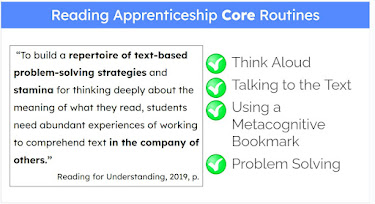RPI Text Selection: Day 3, Term 1, 2025
We began the day by going to our breakout groups and sharing how we've found the first three weeks. It was good to know I'm not the only one who feels a bit overwhelmed by incorporating the homework in to our current planning! We then looked at each others' taskboards and Hapara Workspaces. It made me realise that taskboards are a great option to use, even with more senior students. I was also reminded that 'Epic' is an excellent site for reading material.The next focus was on reading apps and tracking systems. A key point about the tracking is that the students should have access to this, just as they should have access to their e-asTTle and PAT results.
We then looked at digitising text. I already use the 'Tactiq' app for transcribing video to text, which is an excellent resource for planning and lessons. I'll be looking into several of the other options that were mentioned such as Google smart chips as well as different reading apps.
Our next focus was on choosing appropriate texts. A rich variety of texts is crucial! Content and literacy skills should be the focus. The following is the main focus for year 9-13 students in the new curriculum: 'The focus of this strand is on teaching students to decode, make meaning from, and think critically about text'.
multimodal, conventions, genre
Range of technologies
print, digital, tactile
Multiple entry points
video or visual text can build background knowledge more efficiently
Connections cross-curricular
text sets can be helpful for this
What did I learn that could be used with munity, with either colleagues,
